Replacing your windows is a significant investment that can enhance the beauty, comfort, and energy efficiency of your home. With a wide range of window styles available, choosing the right one for your specific needs can be overwhelming. In this comprehensive guide, we’ll walk you through the different replacement window styles, their features, benefits, and considerations. Whether you’re looking to upgrade your home’s aesthetics or improve its functionality, this guide will help you make an informed decision. Let’s dive in!
What’s Inside
- Double-Hung Windows:
- Bay Windows:
- Casement Windows:
- Sliding Windows:
- Awning Windows:
- Single Hung Windows:
- Picture Windows:
- Geometric Shape Windows:
- Arched Windows:
- Garden Windows:
- Replacement Window Styles Before and After Gallery
- Replacement Window Styles Price Table Comparison
- Replacement Window Styles Pros and Cons Comparison
- Customer Testimonials
- How to Choose Between Window Types
- Do certain window styles have more resale value?
- Does It Matter Which Room the Windows Are Going In?
- What affects replacement window pricing?
- Conclusion
- Frequently Asked Questions
Double-Hung Windows:
- Description and features: Double-hung windows are designed with two vertically sliding sashes, allowing for both top and bottom ventilation. They are versatile and easy to clean, making them a popular choice for many homes.
- Pros: Provides excellent ventilation, easy to clean and maintain, offers a classic and traditional look.
- Cons: Limited unobstructed view compared to other window types, can be prone to air leakage if not properly sealed.
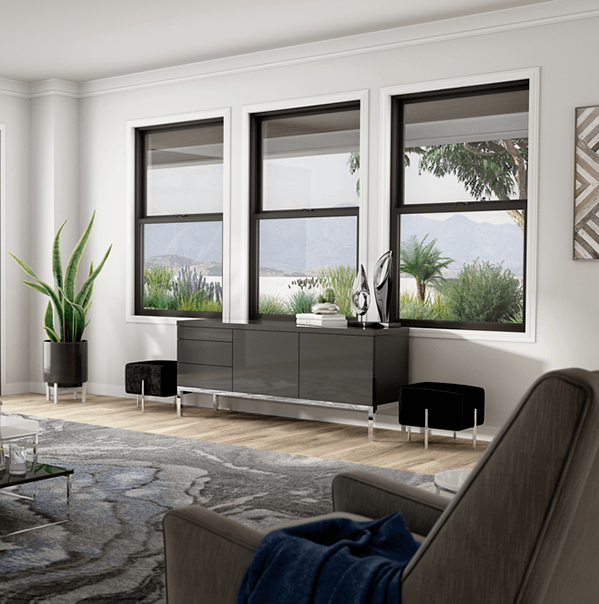
Bay Windows:
- Description and features: Bay windows extend from the exterior wall, creating a nook or bay inside the room. They consist of three or more windows that project outward, adding architectural interest and providing panoramic views.
- Pros: Enhances natural light and spaciousness, creates a cozy seating area, adds aesthetic appeal to both the interior and exterior of the home.
- Cons: Can be more expensive to install, may require additional support or structural modifications, limited window treatment options.
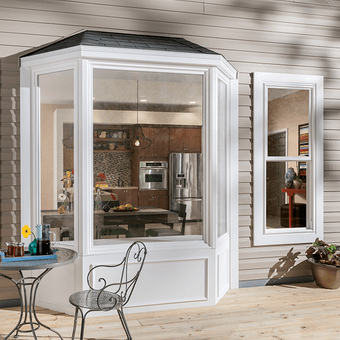
Casement Windows:
- Description and features: Casement windows are hinged on one side and open outward with the help of a crank handle. They offer unobstructed views and excellent ventilation, making them suitable for various areas of the home.
- Pros: Provides maximum airflow and ventilation, easy to open and close, offers a clear view with minimal visual obstruction.
- Cons: Limited design options, can be less energy-efficient compared to other window types, may require regular maintenance of hinges and seals.
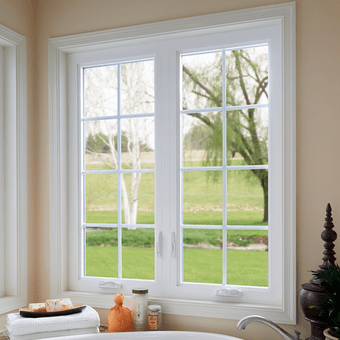
Sliding Windows:
- Description and features: Sliding windows have one fixed panel and another panel that slides horizontally along a track. They are popular for their simplicity, ease of use, and contemporary appearance.
- Pros: Easy operation and maintenance, allows for a good amount of natural light, space-saving design.
- Cons: Limited ventilation compared to other window types, may be prone to air leakage if not properly sealed, can accumulate dirt and debris in the tracks.
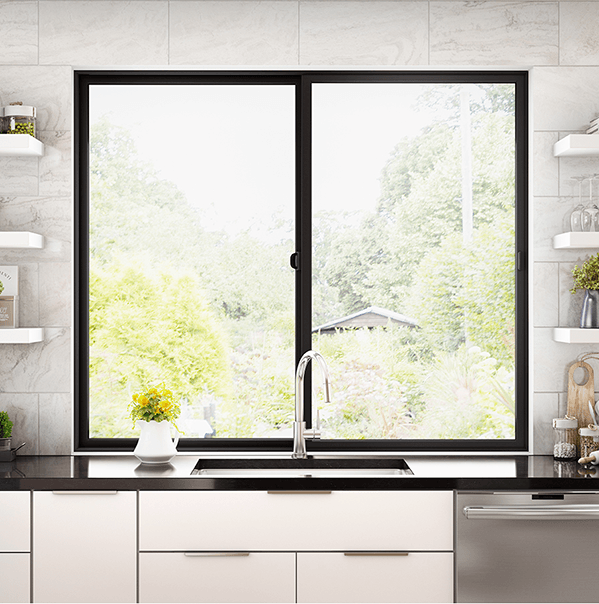
Awning Windows:
- Description and features: Awning windows are hinged at the top and open outward from the bottom, creating an awning-like effect when opened. They are ideal for providing ventilation even during light rain.
- Pros: Allows ventilation in various weather conditions, provides enhanced privacy, offers unique design opportunities.
- Cons: Limited view when fully open, can obstruct exterior space when opened outward, may require regular maintenance of hinges and seals.

Single Hung Windows:
- Description and features: Single hung windows have a fixed upper sash and a lower sash that operates vertically. The lower sash can be opened for ventilation while the upper sash remains fixed.
- Pros: Energy-efficient design, cost-effective option, easy to clean and maintain.
- Cons: Limited ventilation compared to double-hung windows, cleaning the exterior of the upper sash can be challenging, may have lesser aesthetic appeal.
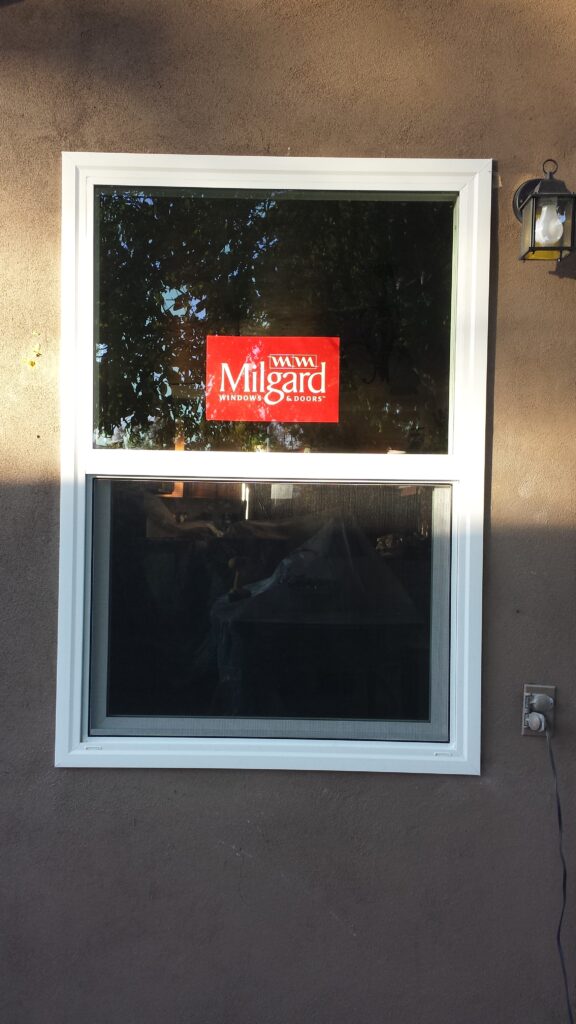
Picture Windows:
- Description and features: Picture windows are large fixed windows that do not open or close. They are designed to provide expansive views, maximize natural light, and create a focal point in the room.
- Pros: Offers unobstructed views, enhances natural light, creates a dramatic and stylish look.
- Cons: No ventilation, can be less energy-efficient due to larger glass area, can be more expensive to install.
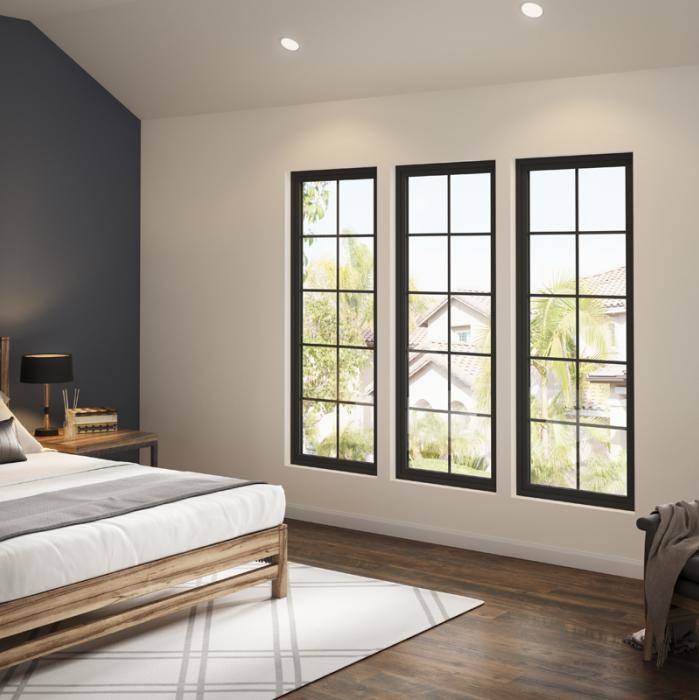
Geometric Shape Windows:
- Description and features: Geometric shape windows refer to non-rectangular windows, such as circles, triangles, or hexagons, that add architectural interest and uniqueness to a home.
- Pros: Enhances visual appeal, adds a distinctive touch to the overall design, allows for creative and customized window configurations.
- Cons: Limited operability and ventilation, can be more expensive to manufacture and install, may require specialty glass or custom fabrication.
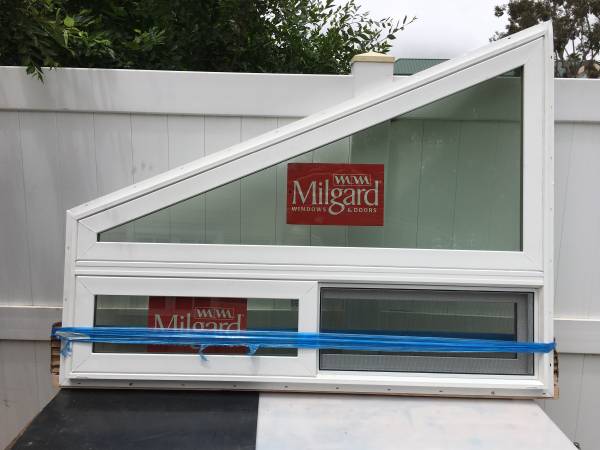
Arched Windows:
- Description and features: Arched windows have a curved or semi-circular shape at the top, adding elegance and architectural charm to a home. They can be fixed or operable, depending on the design.
- Pros: Provides architectural interest and aesthetic appeal, enhances natural light, adds a sense of grandeur to the space.
- Cons: Limited operability and ventilation, can be more expensive to manufacture and install, may require custom measurements and specialized installation techniques.
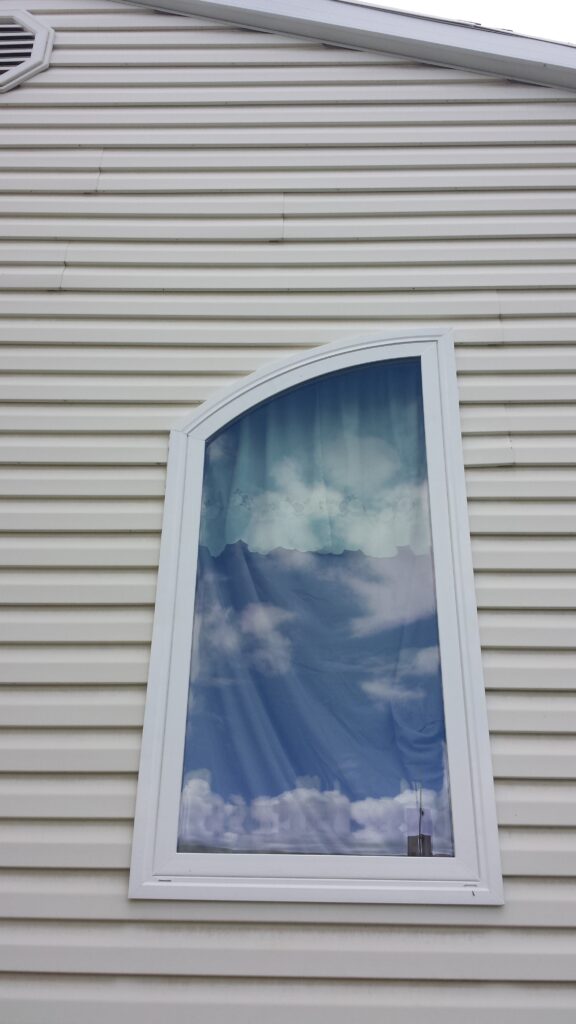
Garden Windows:
- Description and features: Garden windows, also known as greenhouse windows, extend outward from the wall and have a sloped glass roof. They are designed to create a small indoor gardening area, allowing plants to thrive in natural light.
- Pros: Provides a dedicated space for indoor gardening, enhances natural light in the room, adds a unique and charming feature to the home.
- Cons: Limited view and ventilation compared to other window types, may require additional support or structural modifications, can be more prone to condensation and temperature fluctuations.
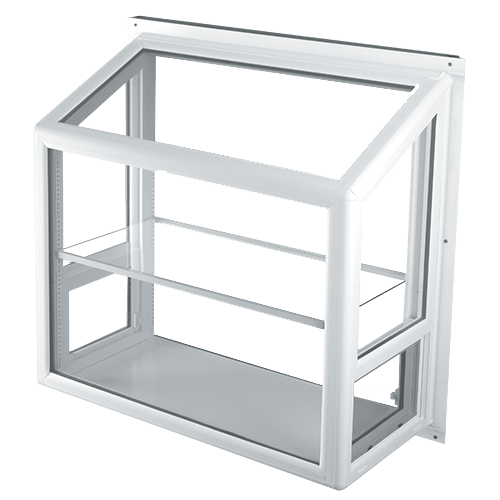
Replacement Window Styles Before and After Gallery
Check out our before and after gallery to see the transformative impact of replacement windows on different homes.
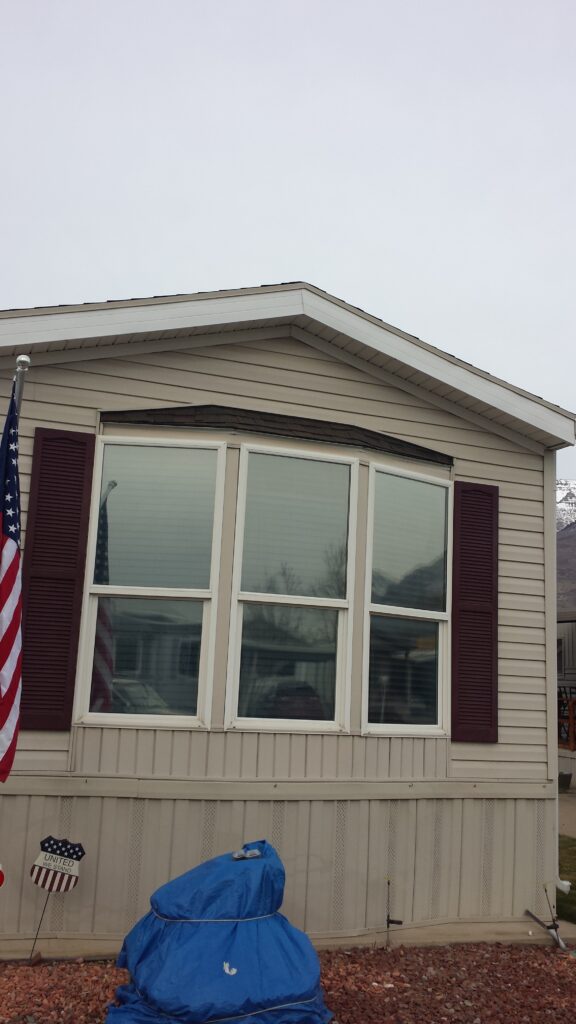
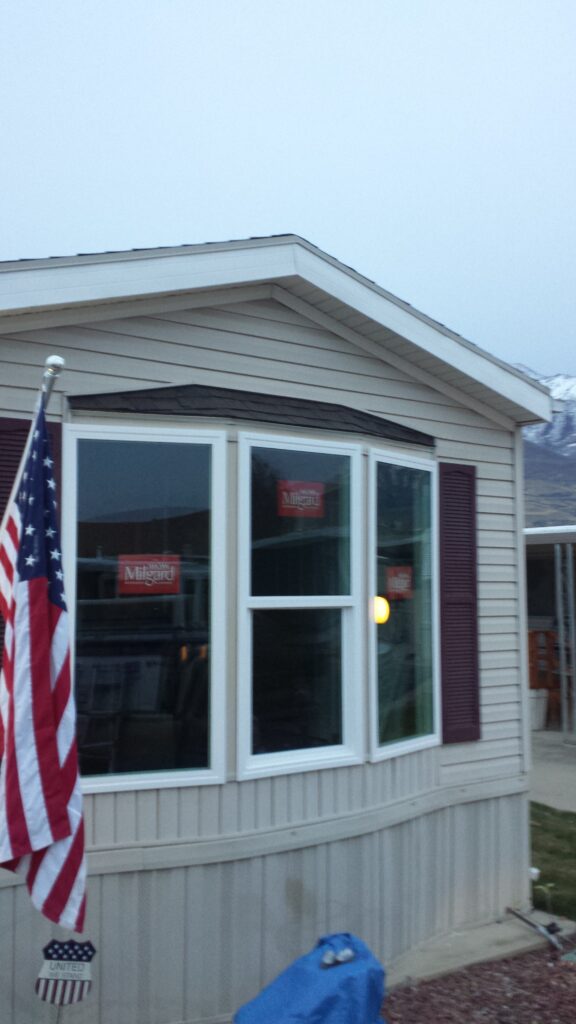
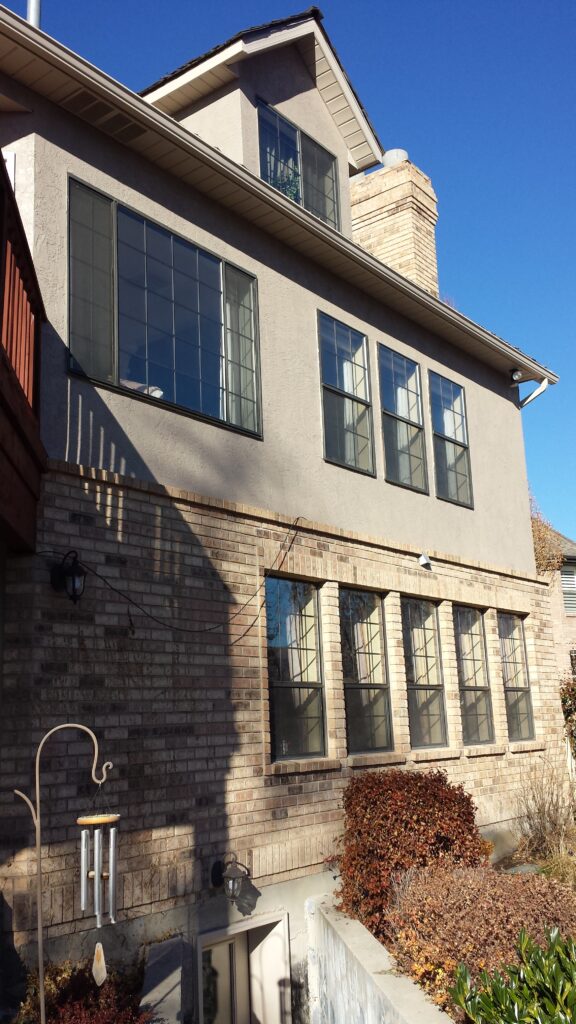
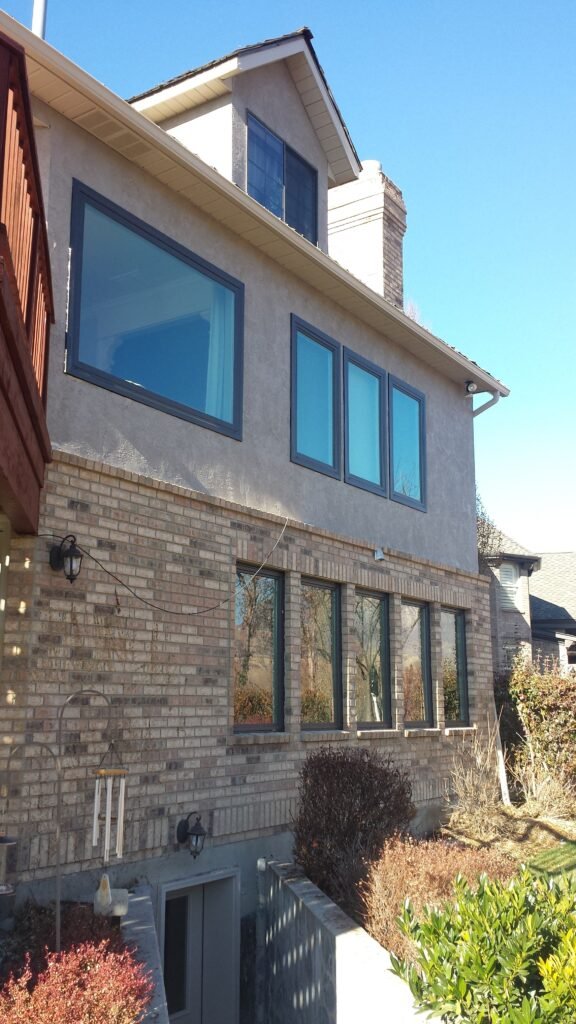


Replacement Window Styles Price Table Comparison
Considering vinyl windows? Take a look at our price comparison table for vinyl window styles:
| Window Style | Price Range |
| Double-Hung Windows | $200 – $1,200 |
| Bay Windows | $368 – $1,957 |
| Casement Windows | $300 – $1,500 |
| Sliding Windows | $175 – $1,300 |
| Awning Windows | $250 – $1,200 |
| Single Hung Windows | $150 – $800 |
| Picture Windows | $150 – $1,200 |
| Geometric Shape Windows | $250 – $1,500 |
| Arched Windows | $300 – $1,500 |
| Garden Windows | $500 – $2,000 |
Please note that these prices are estimates and may vary based on your location and specific requirements.
Replacement Window Styles Pros and Cons Comparison
To help you make an informed decision, here’s a quick comparison table of the pros and cons of each window style:
| Window Style | Pros | Cons |
| Double-Hung Windows | – Easy to clean and maintain – Good ventilation options. – Versatile design fits many home styles. | – More parts, which can mean more maintenance. – Can be less airtight compared to other types. |
| Bay Windows | Adds aesthetic appeal and value; wide views and natural light; extra interior space | More expensive to install; requires structural support |
| Casement Windows | Excellent ventilation; good security features; energy efficient when closed | Can be obstructed by exterior objects; mechanical parts may need maintenance |
| Sliding Windows | Easy to operate; durable with fewer parts; good for tight spaces | Track can accumulate dirt; limited ventilation |
| Awning Windows | Good for ventilation in all weather; unique look; can be placed high for privacy | Not ideal for high-traffic exterior areas; can be difficult to clean |
| Single Hung Windows | More affordable; less mechanically complex; suitable for traditional designs | Only one movable sash; harder to clean exterior from inside |
| Picture Windows | Unobstructed views; plenty of natural light; minimalistic design | natural light; minimalistic design No ventilation; can lead to excessive heat if not well-placed |
| Geometric Shape Windows | Unique aesthetic appeal; customizable; adds character | Usually don’t open; can be expensive due to customization |
| Arched Windows | Architectural beauty; adds a sense of space and height; often used as an accent | Typically fixed, so no ventilation; costly to install and replace |
| Garden Windows | Windows Extra space for plants and decor; adds dimension; more light from multiple sides | Protrudes outward, can be vulnerable; limited size and placement options |
Customer Testimonials
But don’t just take our word for it! Here’s what some of our satisfied customers have to say about their experience with our different window types:
“The Double-Hung windows from Utah Window Experts exceeded my expectations. The installation was seamless, and these windows have transformed the look of my home with their timeless, versatile style.” – Sarah T.
“I am impressed with the quality and craftsmanship of the Casement windows from Utah Window Experts. They have made a noticeable difference in energy efficiency in my home, proving their superiority in terms of functionality.” – John D.
How to Choose Between Window Types
When it comes to selecting the perfect windows for your home, there are several factors to consider. These include your home’s architecture, functionality needs, and personal preferences. Let’s explore some key aspects in more detail:
- Aesthetics: The style of your windows should complement the overall design and aesthetics of your home. Consider the architectural style, color palette, and exterior features when choosing the window type.
- Energy Efficiency: Windows play a crucial role in the energy efficiency of your home. Look for windows with high-quality insulation, low-emissivity (low-E) glass, and proper weatherstripping to minimize heat transfer and reduce energy consumption. Read our blog here for more information about energy efficiency!
- Ventilation: Different window styles offer varying degrees of ventilation. Consider how much airflow you desire in each room and choose windows that can provide adequate ventilation. Options like double-hung windows, casement windows, or sliding windows can offer excellent ventilation options.
- Maintenance Requirements: Some window types require more maintenance than others. Consider your ability and willingness to clean and maintain the windows regularly. For instance, wood-framed windows may require more upkeep compared to vinyl or aluminum frames. Read our blog here to learn how to take care of your windows!
By carefully considering these factors, you can make an informed decision and choose the right window style that meets your specific needs and enhances the beauty and functionality of your home.
Do certain window styles have more resale value?
When it comes to selecting windows for your home, it’s crucial to consider their impact on resale value. While certain window styles can significantly enhance the value of your property, it’s important to strike a balance. Opt for popular and timeless options like double-hung, casement, or picture windows, as these tend to appeal to potential buyers. However, be cautious with overly unique or unconventional styles, as they may limit your home’s market appeal and potentially affect its resale value. To make an informed decision, consult our experts who can guide you towards a window style that not only complements your home’s overall design but also maximizes its resale potential. Milgard windows are also known to increase resale value.
Does It Matter Which Room the Windows Are Going In?
When choosing window styles for specific rooms, it’s important to take into account their unique requirements for lighting, ventilation, and privacy. Each room has its own distinct needs, and by considering these factors, you can maximize the functionality and comfort of each space. By carefully selecting the right window styles, you can ensure that each room is well-suited to its intended purpose and creates an environment that is both functional and comfortable.
What affects replacement window pricing?
When it comes to the cost of your home window replacement project, there are several factors to consider. In addition to the window style, factors like window location and wall condition can play a role in determining the overall cost. The location of the window, whether it’s on the ground floor or higher up in the building, can impact the complexity of the installation process and potentially affect the cost. The condition of the walls surrounding the window can also be a factor. If the walls require additional repairs or modifications to accommodate the new window, it can increase the overall project cost.
Another important cost factor is the window frame material. Different materials, such as wood, vinyl, or aluminum, come with varying price tags. Wood frames may be more expensive but can provide a natural and aesthetically pleasing look. Vinyl frames are often more affordable and require less maintenance. Aluminum frames are known for their durability but can be pricier compared to other materials.
Considering these factors, it’s important to assess your specific project needs and budget accordingly. By taking into account window location, wall condition, and window frame materials, you can better estimate the overall cost of your home window project.
Conclusion
Choosing the right replacement window style can transform your home’s aesthetics, functionality, and energy efficiency. By understanding the features, pros, and cons of each window style, you can make an informed decision that suits your unique needs. If you’re ready to enhance your home with new windows, contact us for a free consultation. Our team of experts will guide you through the process and help you find the perfect replacement windows for your home.
Frequently Asked Questions
- What is the most common replacement window?
The most common replacement window is the double-hung window. This type of window has two sashes that slide vertically, providing excellent ventilation and easy cleaning.
- What style of windows are most popular?
Casement windows and double-hung windows are among the most popular styles due to their versatility, energy efficiency, and aesthetic appeal.
- What is the cheapest window style?
Single-hung windows are typically the cheapest window style. They feature a bottom sash that moves vertically while the top sash remains stationary.
- What are different styles of windows called?
There are numerous styles of windows, each with a unique name. Some examples include double-hung, casement, bay and bow, picture, sliding, awning, and transom windows.